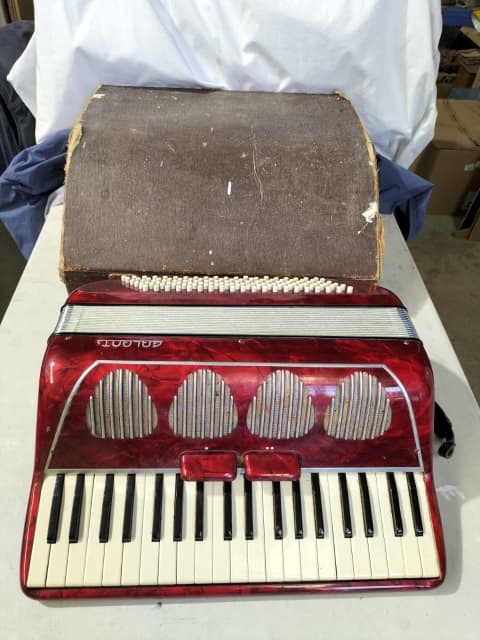I use 26/48, 26/60 and tiny 30-treble-note CBAs for Irish and Scottish/Shetland/Cape Breton playing all the time. 26 treble notes also works great for Tex-Mex, zydeco, and Cajun (which I haven't played much). I do prefer and recommend 30 or 34 treble notes for some other folk or folk-ish genres I love to play, such as French musette, tango, klezmer/Balkan/Roma due to their more extensive use of keys below the 26-key range. But those genres too can be arranged for 26 keys. "Amelie" for sure.
Keywording the word "accordion" on YT with the word "Indifference," the title of one of the most famous musette pieces, by Antonio (Tony) Murena and Joseph Colombo, shows plenty of compact "folk-size" accordions in action. They do appear to be mostly 34 or 30 treble keys in range. Posters above mentioned the classic 3-voice LMM Hohner 34/72 Concerto III, which is a great thought--but don't forget the Hohner 2-voice MM Concerto II, also 34/72. Musette sounds wonderful on those, and there are plenty of vintage offerings around. Should be a bit lighter weight and a bit cheaper.
You can see photos of the gent from Cafe Accordion Orchestra with a nice compact 34/72 in their rendition of "Indifference":
But these pieces can be arranged even for 26 treble keys. The thing about Paris musette is that it can be arranged very simply, as a single-voice folk melody almost. There are tons of lovely clips of folks simply playing a musette piece like "Indifference," as a folk-style waltz. Or . . . it can be arranged in much more elaborate voicing of jazz or classical complexity. Cafe Accordion Orchestra in the clip above is playing it as Django-style gypsy jazz, with improvisation. So when you look up video clips you'll also find people playing very large accordions doing these fabulous, complicated arrangements, and that's awesome. But IMHO, on accordion with some tremolo, be it MM or MMM, single-melody-line musette sounds every bit as beautiful, perhaps more so. This is how "Amelie" captured the hearts of millions. And you don't need to drag around a giant refrigerator to sound soulful, haunting, and romantic playing it.
There are single melody-line arrangements of most of the classic musette pieces for piano or accordion, that retain the essential melody notes but leave out the multi-note chordal/jazz voicings. Here is an example of a simple arrangement for "Indifference." It is rendered here in e minor, so you are not needing the low Bb, a, Ab, or G below middle c.
On the low end, this arrangement does not go lower than your lowest note on a 26-key PA. And the couple of notes that are higher than "High C," are decorative fillips, not essential bones of the melody. You can simply play them an octave down or finesse your melody arrangement so they are not used:
PDF music sheets for free download, pop piano scores,

www.poppiano.org

